One of the standout design features of the Type 26 frigate is a large mission bay. As offboard systems evolve and become more widespread, the flexibility and capacity of mission bays for naval vessels will become increasingly important.
The Type 26 system has been designed and developed by Roll Royce, with initial imagery changing over time as more information became available.
From this
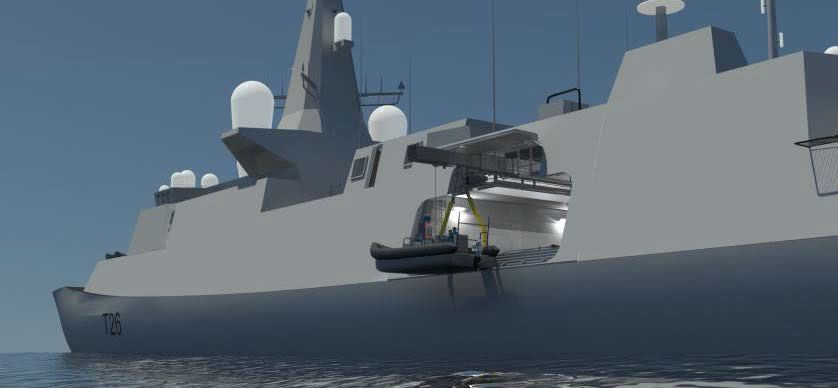
then finally…

Rolls-Royce now has a separate section on their website for mission handling. Read more here and a PDF Brochure
The Type 26 GCS project team leads projects that will benefit NATO standardisation, namely module interfaces, and shock protection. A mock-up of the bay was constructed at RNAS Yeovilton to allow experimentation, especially concerning moving loads inside and outside the bay.
Thornton Tomasetti Defence Ltd, formerly Weidlinger Associates, developed shock mitigation systems a British company with its parent in the US. The protection system was designed by TTDL in Scotland, and funded by DE&S Naval Authority Group at Abbey Wood.
This was tested at an underwater range in Scotland with very encouraging results.
There is much more to this system than meets the eye, it will have active heave compensation and an ability to move loads up to 15 tonnes including crewed and uncrewed vessels, ISO containers, and other bulk loads. The cradle assembly can be changed as designs evolve.
It might also be interesting to compare the T26 approach to that of the US Navy LCS
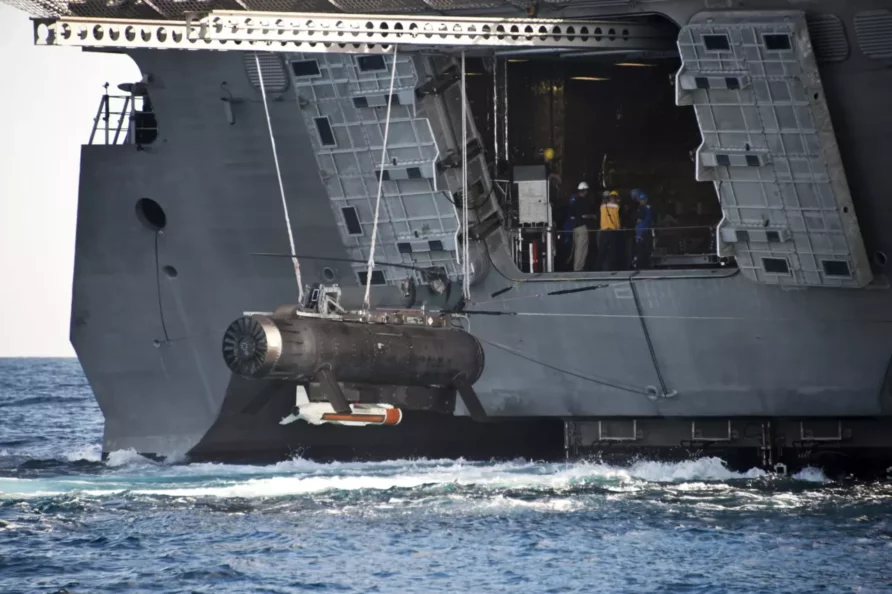
As usual, though, there are civilian alternatives.
Vetsadavit has launched an integrated mission bay concept called the MissionEase System. MissionEase works on a system of hydraulic cradles which moves boats safely from stowage positions to maintenance, preparation or launch areas of the mission bay. It links seamlessly with dual or single-point davits to deploy or recover boats in high seas from either side of the vessel. Kalve explains, “The ability to deploy and recover boats safely is part of the main armament of today’s warships, and critical to seismic work and for expedition cruise ships and yachts. A midships hangar or mission bay allows the boats to be stored, maintained, prepared and launched from a safe environment with a dry, high freeboard. But existing systems rely on overhead gantries to move the boats within the bay. When the ship is moving that is dangerous, and slinging and unslinging takes time.
MissionEase allows the boats to be moved safely and quickly within the bay on the cradles, even in high seas or with a list on the vessel. The boats are fed directly to the davits for launch, or feed directly back into the stow when recovered.” In addition to a wide range of types and sizes of boats and Unmanned Surface Vehicles, MissionEase will also handle standard TEU containers for stores and armament when the vessel is in port.
Although it cannot move containers at sea, how much of a priority, is open for discussion.
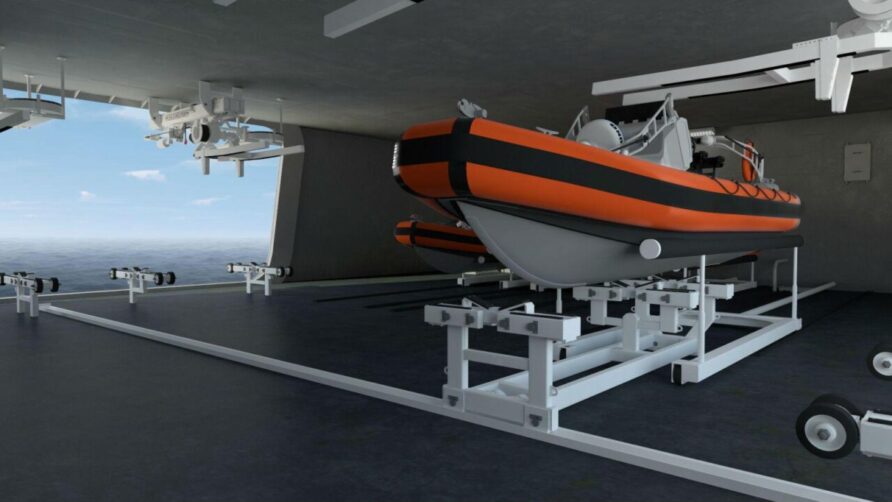
This video provides a good overview
And this
Interestingly, the Mission Ease system has a higher payload than the T26, 28 tonnes compared to a released figure of 15 tonnes for T26.
Read more here
Without these types of handling systems, the considerable benefits offered by offboard and uncrewed solutions are unlikely to be realised, it is an area of crucial importance that very few seem to be talking of.
Read more (Amazon Affiliate)

Discover more from Think Defence
Subscribe to get the latest posts sent to your email.

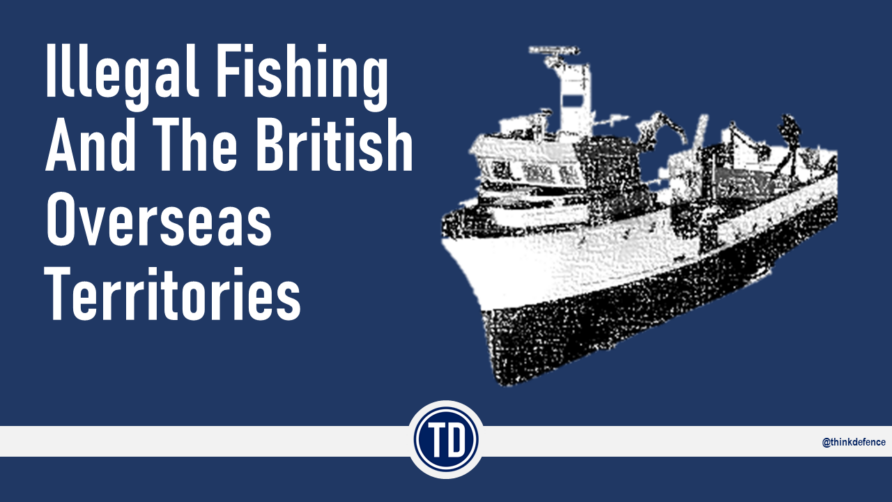
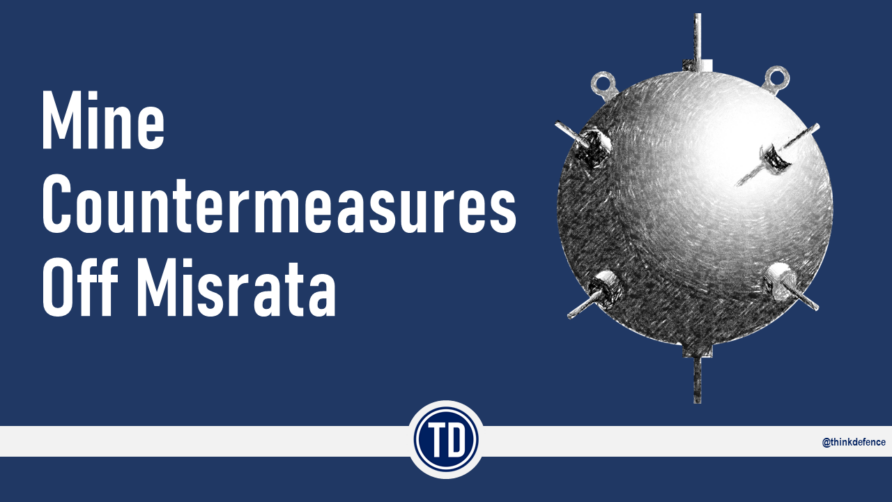
An interesting article on a subject dear to my heart. I’d like to correct an error though, the shock protection system was developed by Thornton Tomasetti Defence Ltd, formerly Weidlinger, and it is a British company with its parent in the US. The protection system was designed by TTDL in Scotland, funded by DE&S Naval Authority Group at Abbey Wood
Thank you DWM, post updated
Thx TD, now the discussion about what is possible can move on from max. length to include also max. weight – the letter probably more important at least for anything to be used sub-sea
You always come up with something interesting – thank you
I wonder if the heave compensated Type 26 setup could offload containers to a landing craft or Mexeflote and under what sea states?
Yes Smitty, there are heave compensating cranes which can offload to landing craft or lighters alongside. The USN has tested a specific one. A long name Large Vessel Interface Lo/Lo Crane
I believe the Swedes have been around with the same kind of cradle system as MissionEase for a good while; with a lesser (weight) capacity though